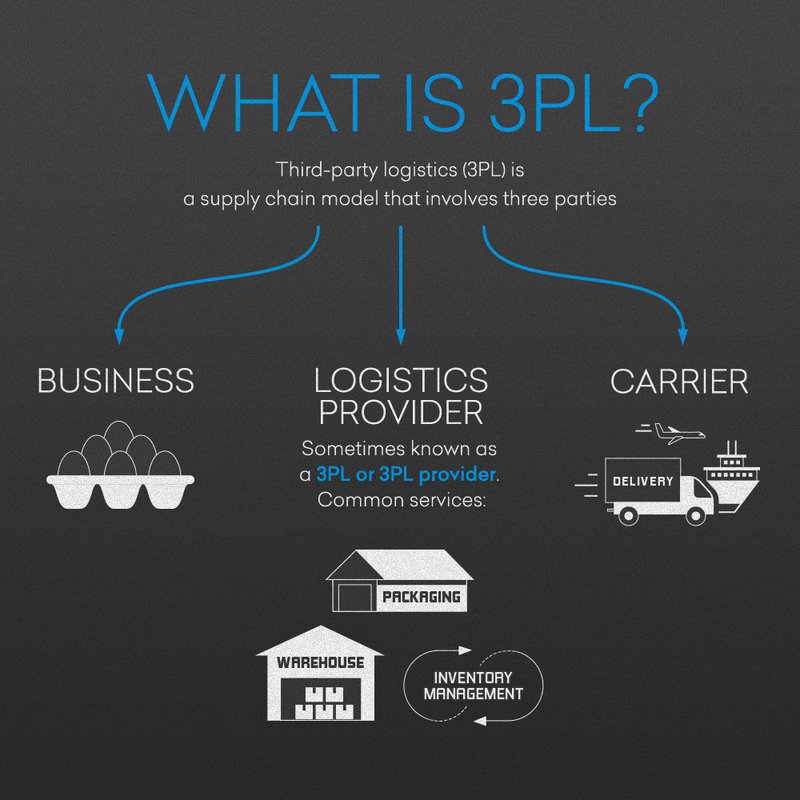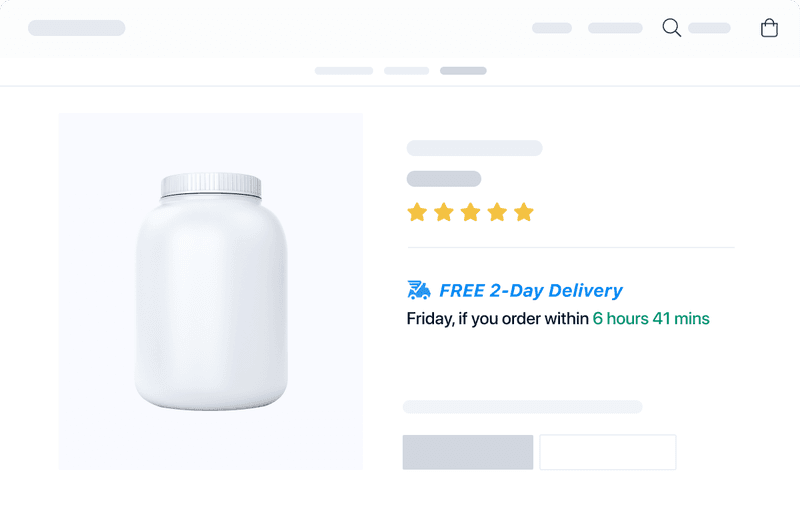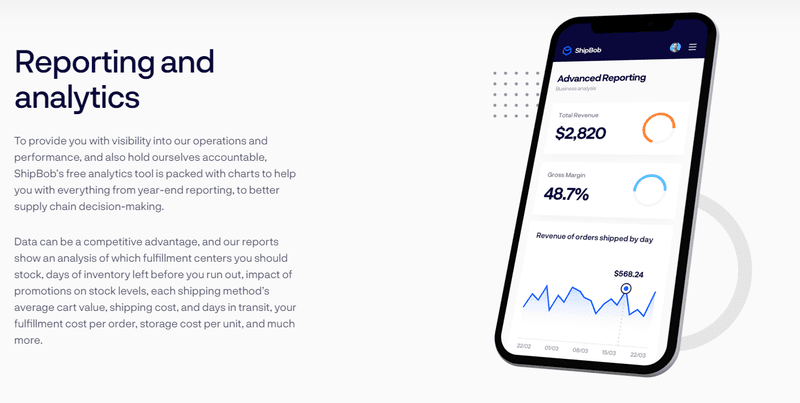Ecommerce Logistics: The Why, What, and How of it
Everything you need to know about eCommerce logistics. Optimize your fulfillment and warehousing using 3PLs to improve your customer experience and increase sales.
Updated November 6, 2024

"The line between disorder and order lies in logistics" - Sun Tzu
Imagine this - you've launched a bunch of marketing campaigns and got way more sales this month. Your numbers keep going up. You're working with a top-notch marketer (probably from Mayple 😉) and soon enough you're going to have to order more products.
Your next challenges are - how do you continue to fulfill each order on time? How do you manage all the new orders coming in while keeping your high standards?
What you need to do is to get a good handle on your logistics operations and set up processes early so you can continue growing your business.
In this post, we break down every aspect of e-Commerce logistics, what works, what doesn't, and what tools to use.
Let's dive in.
What is eCommerce logistics?
Ecommerce logistics refers to the processes involved in storing and shipping inventory for an online store or marketplace. This includes inventory management, pricing, packing, and shipping of online orders.
As an eCommerce business grows it's crucial to have a system in place to keep all orders on track and make sure that every order is delivered to the right place and on time.
In short, E-commerce logistics is a process that starts with getting inventory from the manufacturer or supplier and ends all the way at the customer's doorstep.
Let's take a look at the various aspects of fulfillment and the steps along the supply chain.
The 5 Parts of the eCommerce Logistics Chain
1. Suppliers
Suppliers or manufacturers are companies that create the product and ship it to fulfillment centers. If the brand is dropshipping then the supplier sends the product directly to the customer. Otherwise, the brand makes a bulk order and stores it in a warehouse, and then ships it out to customers as orders come in.
2. Fulfilment centers
A fulfillment center is a large warehouse that holds inventory close to the location of the end consumer. They pack and ship each product as soon as a customer makes an order. This facility can be owned or leased by the eCommerce business (dedicated fulfillment center), or entirely operated by a third-party logistics service provider (3PL). For example, Amazon has its own fulfillment centers for brands that they use to fulfill orders in a program called Fulfilled by Amazon (FBA).
3. Distribution centers
If an eCommerce company is large enough they may use distribution hubs to split inventory between different warehouses or modes of transport. They may choose to use separate warehouses for their B2B and DTC orders because they require different packaging or shipping destinations.
4. Sorting facilities
These are facilities that sort products for large-scale eCommerce operations that are moving bulk quantities of products.
5. Carriers
Shipping carriers are companies that transport the product to the final destination. In the US, these are USPS, UPS, FedEx, and DHL. They get the package from the fulfillment center or the warehouse and transport it to the customer via truck or plane. In certain cases, a brand can use its own private carriers for faster delivery.
Types of eCommerce logistics
There are several different ways to manage your e-commerce logistics.
In-house logistics
Managing your eCommerce logistics in-house means you manage your supply chain yourself. That means tracking shipments from the supplier to the warehouse, and to the various distribution centers or sorting facilities that you may have. It also means using your eCommerce platform analytics and spending long hours calculating the shipping cost of each shipment manually. Think: long nights sorting through Google Sheets and learning Mandarin.
Dropshipping
This is where the supplier or manufacturer sends the product directly to the consumer. This is a much cheaper option because it eliminates warehousing costs but it does increase delivery times dramatically in some cases, especially when it involves international shipping. Think: buying iPhone cases from China from a brand and waiting 2 months for it to get to your customer.
3PLs
Third-party logistics providers handle every part of the logistics process so that you don't have to. They offer inventory tracking, supplier management, warehousing, and packaging. Some 3PLs even have nationwide networks of warehouses that allow them to offer 1 or 2-day shipping.
3 vital parts to improve logistics management
You may be thinking - there are so many moving parts! What do I focus on first?
Let's keep it simple.
Here are the three aspects of the logistics process that every eCommerce business should focus on:
Inventory management
Managing your inventory means keeping track of all your products and knowing their location and quantities. Which warehouse(s) contains which SKUs and shipment tracking between different locations. It's also about knowing which SKUs you're running low on and when you should re-order them next.
Storage and warehousing
This is the most expensive piece of the logistical process. There are a lot of things to take into consideration when you're looking for the right storage solution for your products. This includes things like:
- Where to store various items strategically close to the end consumers
- Finding a solution for bulky or larger items
- Finding the best warehouses to use for each of the marketplaces you sell on
Order fulfillment
Ever since Amazon launched 2-day shipping customer expectations have changed. Now, the top brands offer faster shipping options and fulfill orders much faster. This whole process involves processing the orders, shipping the order, calculating the cost of shipping, and using major shipping carriers for the last mile delivery.
Improving the fulfillment process often requires spreading out the warehouses so that they are located in strategic locations closer to customers. The modern consumer expects a seamless delivery process with 3-5 days for delivery at most.
The most popular way to manage modern eCommerce fulfillment is a 3PL and here's why.
Advantages of using third-party logistics (3PL)
Ecommerce business owners prefer to use third-party logistics companies. In fact, the global 3PL market was valued at $1,027.71 billion back in 2019.
Studies show that merchants are increasingly using 3PLs and get value out of them:
- 86% of retailers said that the use of 3PLs has improved their customer service.
- 75% said that 3PLs resulted in overall cost savings.
- 3PLs are most often used for domestic transportation (86%), warehousing (66%), and freight forwarding (44%).
Here are some of the reasons that online retailers prefer to use 3PLs for their eCommerce fulfillment.
Next-day and 2-day shipping
Customer expectations changed dramatically when Amazon started offering same-day delivery, next-day, and 2-day shipping (which was unheard of in the history of eCommerce). A lot more online stores and marketplaces jumped on the wagon in order to provide a customer experience that could match Amazon's.
The 10-day shipping era was over as places like Walmart and HomeDepot started offering 2-day express shipping and lower shipping costs.
In the past, it was only possible if you used FBA, or Amazon's giant network of warehouses. Now you have 3PLs that have a distributed network of facilities of their own, like ShipBob or Deliverr.
Shorter shipping times and timely delivery require a fulfillment network of warehouses around the country. It's too expensive to build your own that's why online stores prefer to use a 3PL that has its own logistics network.
More data and valuable insights for business growth
One of the main advantages of using a third-party logistics company is the software automation they provide. 3PLs use software that simplifies the logistics process and provides a lot of data and real-time insights on every aspect of eCommerce fulfillment. They can help brands turn valuable insights into actionable tasks.
For example, logistical software could help a retailer realize that they need to open more retail locations in strategic areas or specific zip codes. They could help decrease excess inventory, improve warehouse management, and help companies be greener by streamlining recycling and return processes.
Better return processes
3PLs make it easier for medium-large eCommerce businesses to handle returns. This is where online retailers and brick-and-mortar stores differ. Studies show that the return rate of eCommerce stores is at least 48%, compared to 8.89% for physical retail stores.
That's not because of dissatisfied customers but more largely due to the fact that you can't put on or try out products online before you buy them. So a lot of customers buy larger quantities of products with the expectation that they will return one of them if they don't fit, or if they don't quite like the style.
That creates a serious logistical nightmare for online retailers. 3PLs can help brands improve their return process and make sure that it's running smoothly.
Scalability
Third-party fulfillment services have established relationships with suppliers, regional carriers, and manufacturers. They can help at every point of the eCommerce supply chain by connecting brands with the right supplier, shipping carrier, or fulfillment partner.
They can also get shipping discounts, lower delivery costs, and improve last-mile delivery. All of this translates to more profit, a better customer experience, and a higher potential to hit rapid growth.
Recap
Logistics management is a crucial part of every eCommerce business. It requires a fulfillment network of partners across the entire supply chain. It also requires a savvy eCommerce logistics partner, a third-party fulfillment service, and some software that automates a lot of the process for you.
A really good fulfillment strategy is not created overnight. Look at your business needs and start optimizing your supply chain step-by-step. If you assemble the right team of partners and focus on meeting consumer expectations then you will win, every time.
Using Amazon FBA? Need a help improving your processes and growing sales? Talk to one of our expert Amazon FBA specialists today!







![{year} Beauty Ecommerce Trends & Growth Strategies & Brands to Follow [Examples]](https://entail.mayple.com/en-assets/mayple/fit-in/280x280/61dd64df1ee510cd7bc62e37_amyshamblenxwM61TPMlYkunsplash1_674531c2e05e68084453311b2c988150_2000-1699776104973.jpg)

